When designing a garden, we are encouraged to think of the foliage first. A strong backbone of interesting leaves in the garden will hold a design together, even when flowering plants are not at their peak. However, we can quickly find ourselves in a foliage frenzy, choosing exciting leaves in every color from purple and chocolate to lime and rich gold, with spots and splatters or stripes and streaks. Colorful though it may be, it can also be a bit much.
Old Fashioned smoke bush can be part of the answer to such color overload. Its presence in the garden provides the eye with a place to rest; it creates a soothing balance with the vibrant flowers and leaves of its neighbors. Despite its name, Old Fashioned smoke bush is not an heirloom cultivar, but was introduced to the market in 2006. It has since become one of my favorites.
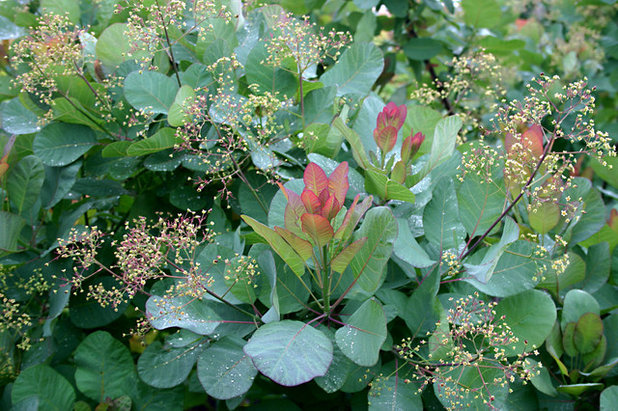
Henny Kolster
Botanical name: Cotinus coggygria 'Old Fashioned'
Common name: Old Fashioned smoke bush
USDA zones: 5 to 10 (find your zone)
Water requirement: Average
Light requirement: Full sun or partial shade
Mature size: 6 feet tall and 5 feet wide
Benefits and tolerances: Cut flowers; drought tolerant when established; said to be deer resistant (although my deer haven't got the memo)
Seasonal interest: Spring, summer and fall
When to plant: Spring or fall
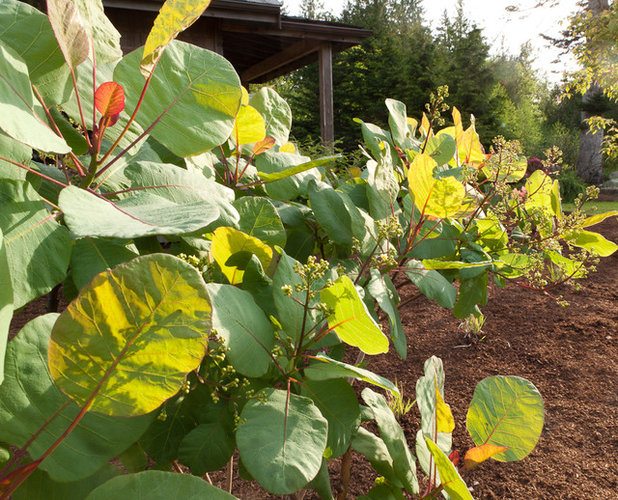
Le jardinet
Caution: Smoke bushes are considered invasive in some parts of the country, although this is not a problem where I live, in the Seattle area. Check with your local cooperative extension office for advice.
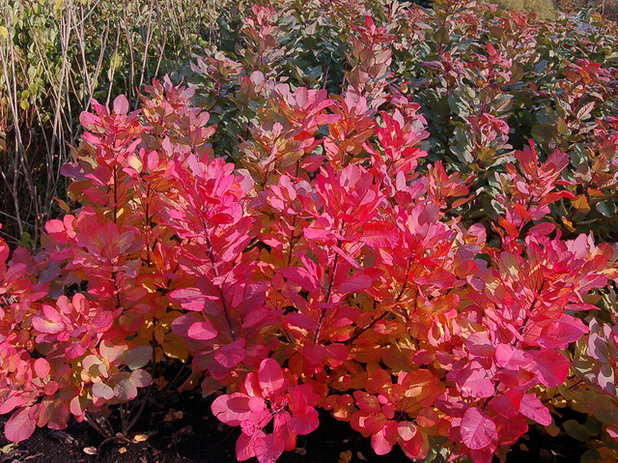
Concept Plants
Distinguishing traits. The soft oval leaves open purple before maturing to a cool blue-green, contrasting beautifully with the ruby-red stems and veins.
Prolific yellow-green flowers adorn the shrub in spring, while in fall the bush ignites with fiery shades of red, orange and hot pink.
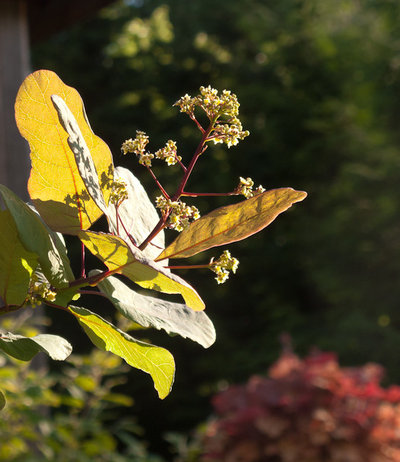
Le jardinet
How to use it. The foliage has a luminous quality when backlit by the sun, as you can see in this photograph, so plant it where you can appreciate this.
Although typically purchased for use in the landscape, Old Fashioned smoke bush also makes a striking specimen in a container.
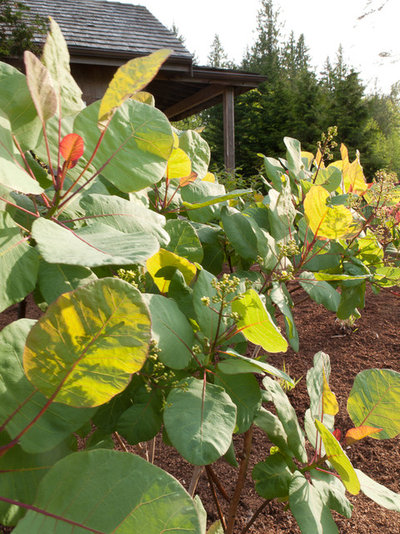
Le jardinet
The unique color can be the starting point for a gentle monochromatic scheme; pair it with
Tasmanian Tiger spurge (
Euphorbia characias 'Tasmanian Tiger') and
Quicksilver hebe (Hebe pimeleoides). The rich purple foliage of
fringe flower (Loropetalum chinense) would be delightful for a gentle contrast, drawing attention to the dark red veins and stems of Old Fashioned.
If you prefer bolder colors, plant this smoke bush adjacent to a golden locust tree (
Robinia pseudoacacia 'Frisia'), whose chartreuse leaves turn a bright yellow in fall. A skirt of bright orange daylilies
(Hemerocallis),
like
'Flasher', would give an early blast of color, too, and would really stand out against the cool tones of the smoke bush.
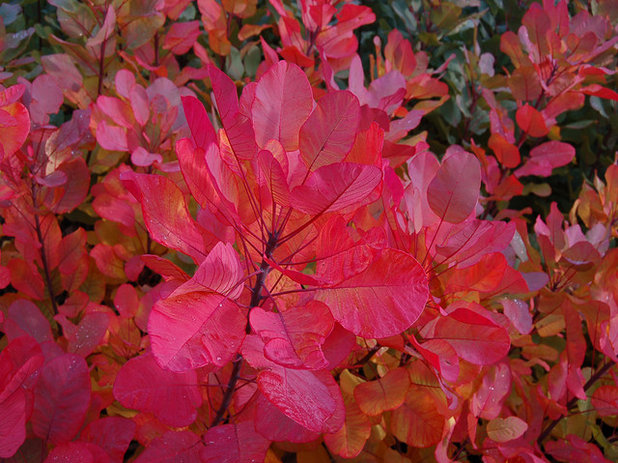
Concept Plants
Planting notes. All smoke bushes prefer reasonably fertile, moisture-retentive yet well-drained soil. They benefit from an application of balanced fertilizer in spring, although I typically just add a mulch of good-quality compost.
To get larger leaves (although this will sacrifice the flowers), older smoke bushes can be coppiced in spring. When buds begin to break, cut the stems of the smoke bush back to just 2 feet tall. By the end of the summer the shrub will have quickly grown again to 4 feet tall and wide, but the foliage will be even more stunning than usual. Do not coppice very young plants, however. I usually wait until at least their third year in the ground.





